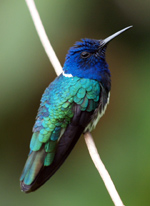
Journal: 27 Jan 05, Asa Wright Nature Center
Journal
| Jan 26 | |
| Jan 27 | |
| Jan 28 | |
| Jan 29 | |
| Jan 30 | |
| Jan 31 | |
| Feb 01 | |
| Feb 02 | |
| Feb 03 |
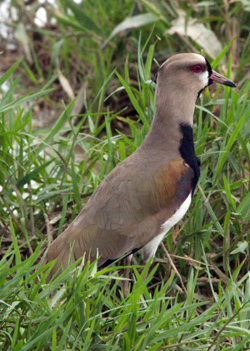 Southern Lapwing Agricultural Station, Trinidad |
We did a pre-breakfast walk with guide Makesh up past our cabin along the Motmot Trail. Good birds, but nothing new. After breakfast and some birding over coffee on the verandah, featuring a Red-crowned Ant-Tanager and a White-tailed Trogon, among others, we drove down to the easterly side of the island, birding a government agricultural experiment station and then the Nariva Swamp and the Atlantic shore.
The agricultural station was very good. In addition to the usual mid-day flycatchers - Great Kiskadee, Social, Tropical and Streaked Flycatchers, Boat-billed, Tropical and Gray Kingbird - we saw a Short-tailed Hawk, Common Blackhawk and a Savannah Hawk. We walked a stretch of farmland road with great success. We saw Wattled Jacana, White-breasted Marsh Tyrant, Grey-breased Martin, an uncommon to rare Grassland or Orange-fronted Yellow-finch, Red-breasted Blackbird, Ruddy-breasted Seedeater, Yellow-chinned Spinetail, Yellow-hooded Blackbird and Pied Water-Tyrant. Good waterbirds, too, including Southern Lapwing, Striated Heron, Solitary and Least Sandpiper, White-necked, Great Blue and Little Blue Heron and Anhinga. |
|
| From the agricultural station, we drove over to a public beach on the Atlantic shore just outside of Manzanilla, on the northern edge of the Nariva Swamp. Except for a Brown Pelican, there were no shorebirds or seabirds. We did see a Pale-vented Pigeon, but otherwise the beach was a bust. The Atlantic was chocolate brown with run off from the recent rainstorms, and the rollers were 4-6 feet tall. No one even thought about swimming.
There was a stiff on-shore wind along the Nariva coast which limited birding. We did spot a Savannah Hawk and a Common Blackhawk perched on top of broken-off palm trees, and with some work at a corner turned up a Green-rumped Parrotlet, Red-rumped Woodpecker and a Black-crested Antshrike. But the long stretches paralleling the shore were pretty quiet. The next to last stop was in a partially drained portion of the Narvia Swamp. It wasn't so windy there, and walking along the one-laneroads on top of drainage dikes, we saw a Merlin, a Pearl Kite, a Yellow-crowned Parrot (a fairly recent arrival from Venezuela), an Osprey, a Little Blue Heron, several Purple Gallinule, a Yellow-hooded Blackbird and a Snowy Egret. |
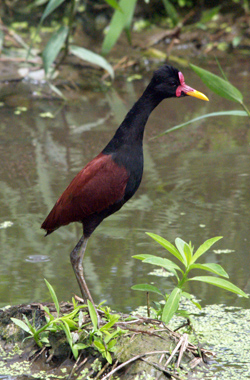 Wattled Jacana Agricultural Station, Trinidad |
|
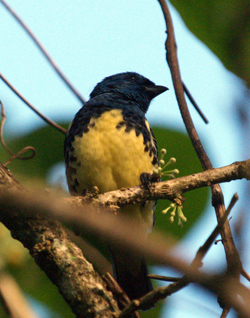 Turquiose Tanager Nariva Swamp, Trinidad |
The last stop was at a Red-bellied Macaw roost, where 15-20 Macaws arrived at twilight, squabbling and chattering at they disappeared into palm fronds 100 yards west of the road. At least one member of the group couldn't get into the habit of looking both ways before crossing the road, but no disasters ensued.
The good and bad thing about Asa Wright is that it is a long ways from the more developed areas of Trinidad. It's a good thing because it is quiet, there are a lot of birds and handsome scenery. It's a bad thing when you drive in darkness from Cocos Bay back to Asa Wright. |
|
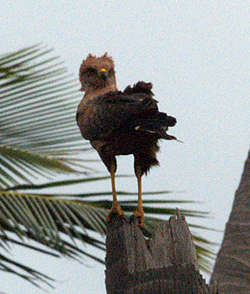 Wind-blown Savannah Hawk Nariva Swamp, Trinidad |
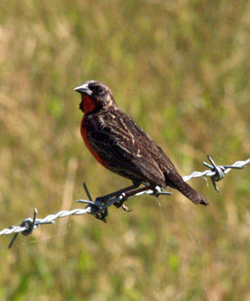 Red-breasted Blackbird Agricultural Station, Trinidad |
|